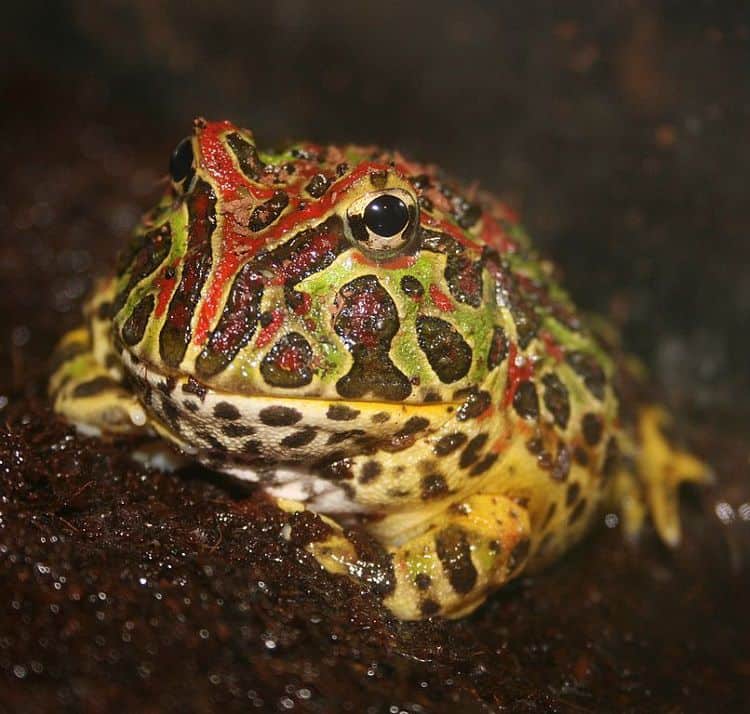Table of Contents
Frogs are not normally at top of the list when it comes to popular pets, but these low maintenance creatures are fascinating to watch and make perfect pets, particularly for children. An inexpensive pet, frogs can live up to fifteen years if they are well cared for. Well cared for means making sure they stay healthy and that they are fed the correct types of food.
What exactly do frogs eat, and what can you do if you notice that yours is not eating? The following paragraphs offer some advice on feeding your frog and dealing with any problems that might arise.
that might arise.
What Do Frogs Eat?
In their natural habitat, frogs like to eat insects such as dragonflies, mosquitoes, moths, and flies. These carnivorous creatures eat live prey; they will not eat dead insects or other dead creatures. Larger frogs can eat things like worms, snails, slugs, and grasshoppers. Some have even been known to eat small mice, small snakes , and baby turtles.
, and baby turtles.
What Do Frogs Eat in Captivity?
You must remember that if you do decide to get a pet frog, you are going to have to provide live food. As predators, frogs like to catch their food, so you must provide food that is suitable for the age and species of frog in question. Other things you will need to consider include the number of frogs you have and what their breeding status is. Basically, not all frogs will have the same dietary requirements.
Crickets are a good choice for feeding a pet frog with. However, and as mentioned above, because frogs eat a varied diet in the wild, it is crucial that you try to replicate this as best you can when these creatures are in captivity. In addition to crickets then, it is a good idea to also offer worms and grasshoppers. These insects can be purchased locally at a reptile pet store or online if you do not live near to a pet store that sells live reptile food. Click here for a great selection at Amazon.
for a great selection at Amazon.
If you have a large frog such as an African bullfrog or pacman frog, be aware that you may need to feed it with mice. Newborn mice, or ‘pinkies’, are the most common types of mice offered to large pet frogs, but if this is something that you balk at, it would perhaps be better to consider smaller frogs as pets instead.
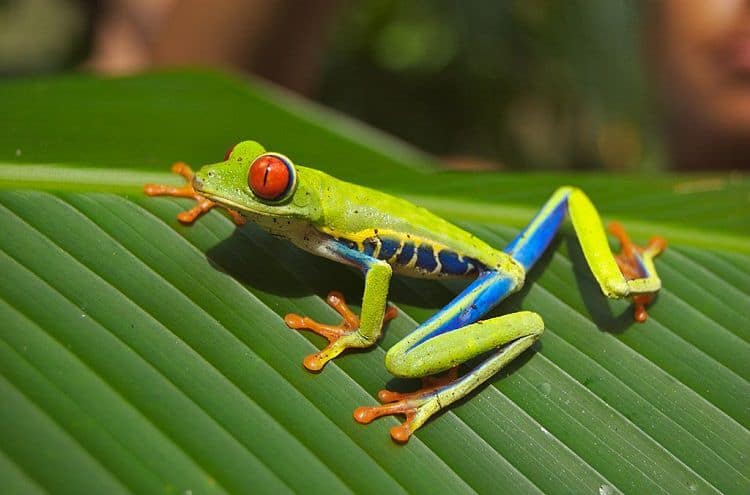
Red-Eyed Tree Frog 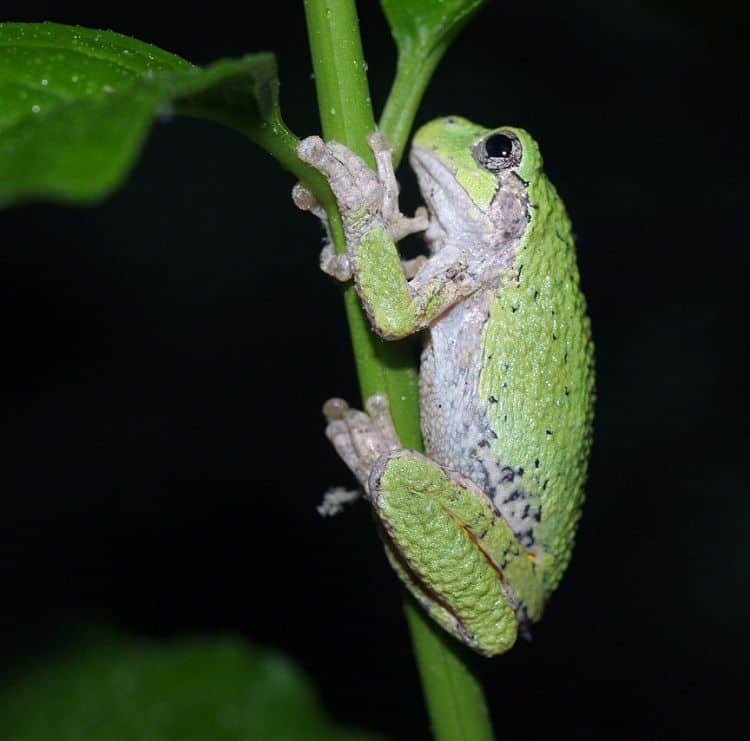
Gray Tree Frog 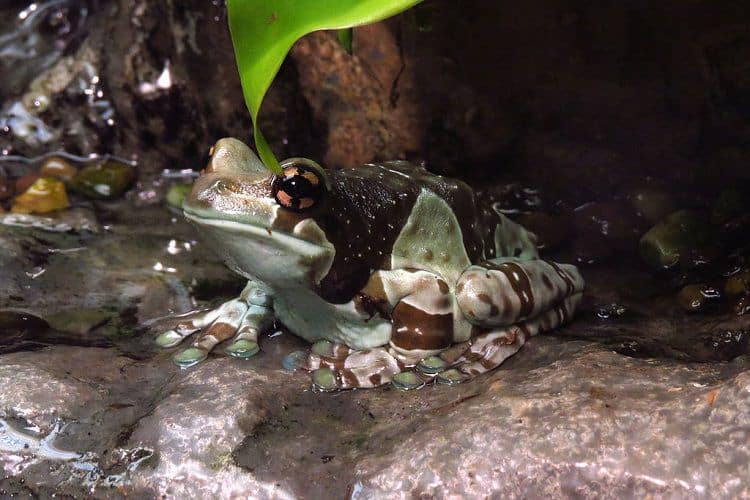
Amazon Milk Frog
How Often Do You Need to Feed a Frog?
When considering dietary requirements for your frog, knowing what to feed it is not the only consideration. You will also need to know how much to feed it and how often.
Well, for a start, the food you do provide should not be wider than the width of the frog’s head. If you offer food that is too large, the frog could end up developing intestinal problems.
Gut-laden food is the preferred option for a frog as this will ensure that it gets the nutrition it needs. If you are worried that the insects you are providing are not gut loaded, you might want to sprinkle them with nutritional supplements to ensure your frog does not suffer from a deficiency in Vitamin A.
It is best to avoid feeding the frog insects that have been caught near to your home as these could have been exposed to pesticides, which can end up harming your frog.
The frequency and amount of food your frog requires will depend on the species of frog you have and how active it is. If you feed it too much food, do not be too surprised if it becomes overweight or even obese. It is not only humans this happens to.
Young frogs, or those with a lot of energy, will require food more often than their older counterparts or less active frogs. If your frog is very active, make sure you provide food at least once, or even twice, a day. Less active frogs should only really be fed every other day.
You can provide four to five crickets at a time. If your frog is eating all of crickets very quickly, you might need to offer a few more. Nevertheless, if there are still crickets in the tank the following day, you’ll know that you feeding too many at a time. It is important to adjust your frog’s feeding pattern accordingly.
If you have a large frog that eats mice, it is likely to require feeding even less often, perhaps once per week, or even once every couple of weeks.
As well as providing sufficient, appropriate food for the frog, you will need to make sure that it has access to clean, chlorine-free water. Frogs do not drink water in the same way that humans do; they absorb it through their skin. For this reason, it is important that the frog’s enclosure is humid. You should be providing a bowl or pool of water, or at the very least ensure that the tank is moist by spraying it regularly.
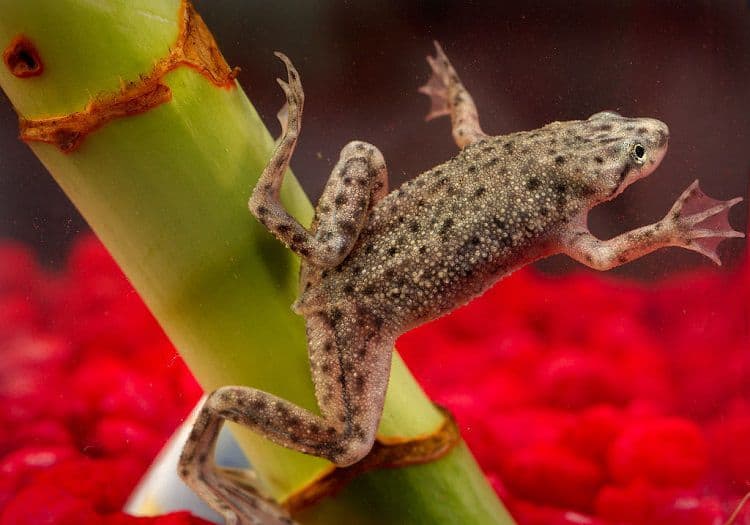
African Dwarf Frog 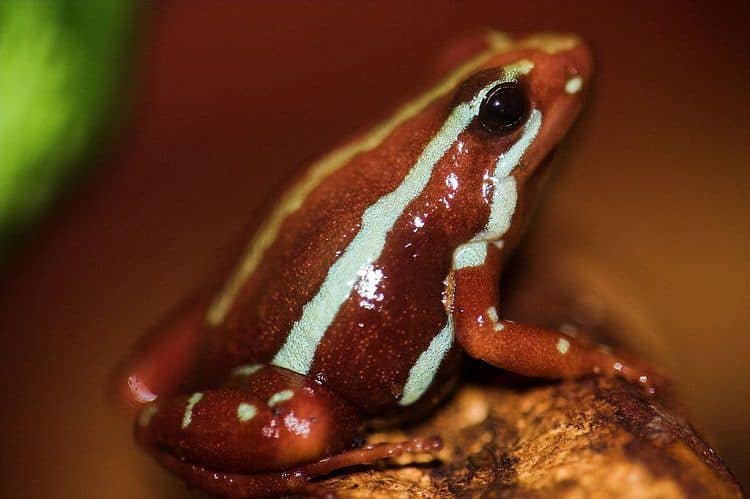
Phantasmal Poison Frog
What Do Baby Frogs Eat?
Baby frogs, or froglets as they are known as, require a bit more care and attention from pet owners to ensure that they survive to adulthood. Froglets need an environment that is as close to their natural habitat as possible, and special attention must be given when it comes to feeding. Note that froglets require feeding more often than adult frogs because they grow and develop rapidly. It is vital therefore that you feed baby frogs daily.
As most frogs are nocturnal, the preferred feeding time is in the evening, but some will prefer to be fed around dawn. If you are feeding your frogs in the evening, be sure to remove any uneaten food the following morning; if you feed at dawn, remove uneaten food in the evening.
Tadpoles will eat algae and small insects. They will feed on plants initially before becoming carnivorous as they grow. Small crickets are good sources of food for baby frogs once they have started eating live prey.
Froglet Not Eating
Occasionally frog owners become concerned that their froglets are not eating, and we are often asked why this could be. Well, the reason for this could be that you are providing too many food items, which is causing the froglet(s) to become stressed.
As mentioned above, it is important that the froglet’s enclosure mimics that of its natural environment. This ensures it remains content with its lot and ‘feels’ safe. One thing to note is that your froglet will need to be able to jump into the water if it is feeling scared or threatened.
Lighting is also important to create a day/night schedule. You can purchase a suitable light source from a local pet supplies store or online but be sure to buy a light that does not produce heat. Click here for a great selection at Amazon.
for a great selection at Amazon.
Also, try to avoid handling the froglet unless absolutely necessary. If you are regularly handling it then you could inadvertently be causing undue stress, which may subsequently be causing it to avoid food.
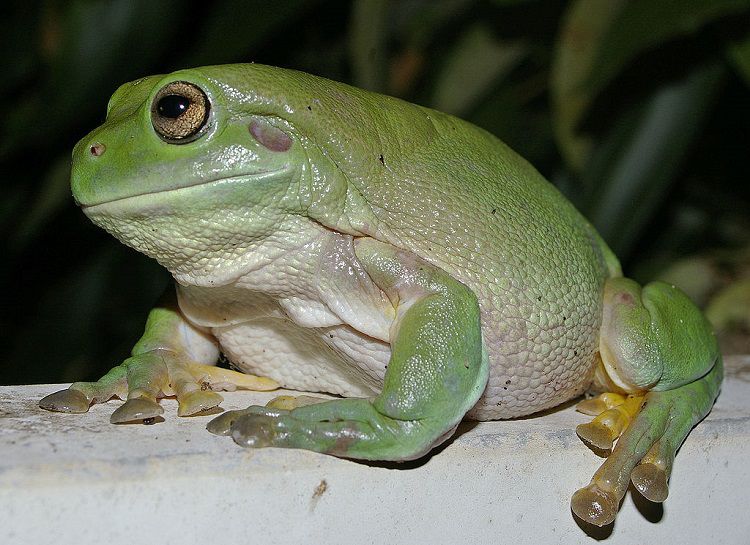
Why is My Frog Not Eating?
While some froglets might take some time to get into the habit of eating live food after becoming carnivores, it can be even more stressful for frog owners if their frog goes from eating regularly to not eating at all. What could be the reason it has suddenly stopped eating?
There are a number of reasons frogs can go off their food. It could be a change in environment. For example, if you have recently moved the frog to a bigger tank, it could be taking some time for it to get used to it and to feel safe. It is best to try to get your frog acquainted with its new environment slowly to prevent it from becoming stressed out.
This can be done by covering three sides of the new tank with a dark material and then removing one side at a time over a period of days.
Bacterial or viral infections are another reason frogs could lose their appetite. If your frog is not eating, has lost weight, and has cloudy eyes, a bacterial infection is probably the culprit. It is not easy to diagnose a bacterial or viral infection yourself, but if you are worried you could always take the frog to a qualified vet. If a bacterial infection is suspected, a broad-spectrum antibiotic will likely be prescribed.
Your frog might also be ‘hibernating’. This means it will lower its metabolism to the point where it is using very little energy. Frogs in this state will have a low body temperature, slow heart rate, and will not eat. Whether or not your particular frog hibernates or not will very much depend on the species. If it goes off its food, it could be because it is getting ready to hibernate, so do bear this in mind.
How Long Can Frogs Go Without Eating?
You might also be wondering how long frogs can go without eating. For a non-hibernating frog, it is normal for them to be able to go for a number of days without eating. As mentioned already, large frogs can go for a couple of weeks without eating if they have had prior eaten a large meal such as a mouse.
Those that are hibernating have placed their bodies into shutdown mode where they are using very little energy, so could theoretically go without food for many months.
Image Credits:
- Featured Image (Argentine Horned Frog): Melanie Mae Bryan – This file is licensed under the Creative Commons
 Attribution 2.0 Generic
Attribution 2.0 Generic license.
license. - Gray Tree Frog: Robert A. Coggeshall – public domain
- Phantasmal Poison Frog: Deepinon at https://www.flickr.com/photos/deepinon/110593290/
 – This file is licensed under the Creative Commons
– This file is licensed under the Creative Commons Attribution 2.0 Generic
Attribution 2.0 Generic license.
license. - Red-Eyed Tree Frog: Careyjamesbalboa
 (Eric De Vries) – public domain
(Eric De Vries) – public domain - White’s Tree Frog: Bidgee
 – This file is licensed under the Creative Commons
– This file is licensed under the Creative Commons Attribution 3.0 Unported
Attribution 3.0 Unported license.
license. - African Dwarf Frog: https://phil.cdc.gov/details.aspx?pid=11835
 – public domain
– public domain - Amazon Milk Frog: D. Gordon E. Robertson
 – This file is licensed under the Creative Commons
– This file is licensed under the Creative Commons Attribution-Share Alike 3.0 Unported
Attribution-Share Alike 3.0 Unported license.
license.

